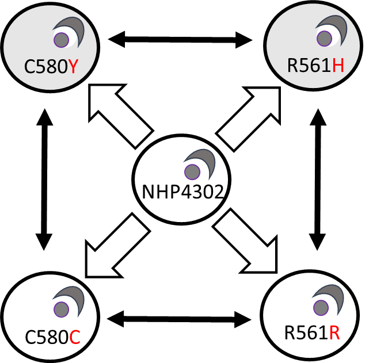Overview

drug resistance mutations and directly examine
parasite fitness and epistatic interactions with
other loci
Drug resistance genes typically interfere with key metabolic processes and therefore carry large fitness costs. We expect compensatory changes to evolve that restore fitness to drug resistant parasites. Different genes involved in drug resistance evolution may interact together to determine both drug resistance and fitness of parasites – these may act in additive and epistatic manner. We are using several different approaches to identify and understand fitness costs and compensatory evolution in malaria, and to determine whether genes interact additively or epistatically to determine outcome phenotypes. In particular, we are using experimental evolution, longitudinal population genomics surveys and CRISPR/Cas9 approaches to better understand the role of fitness, compensation and epistasis in drug resistance evolution.
